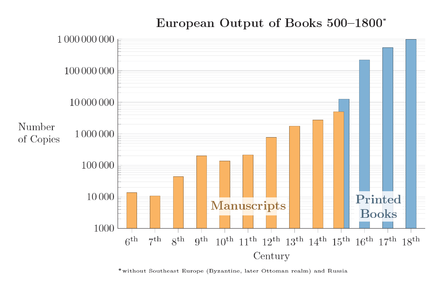Copyright
Copyright is a type of intellectual property that gives its owner the exclusive right to copy and distribute a creative work, usually for a limited time.[1][2][3][4][5] The creative work may be in a literary, artistic, educational, or musical form. Copyright is intended to protect the original expression of an idea in the form of a creative work, but not the idea itself.[6][7][8] A copyright is subject to limitations based on public interest considerations, such as the fair use doctrine in the United States.
Some jurisdictions require "fixing" copyrighted works in a tangible form. It is often shared among multiple authors, each of whom holds a set of rights to use or license the work, and who are commonly referred to as rights holders.[9][10][11][12][better source needed] These rights frequently include reproduction, control over derivative works, distribution, public performance, and moral rights such as attribution.[13]
Copyrights can be granted by public law and are in that case considered "territorial rights". This means that copyrights granted by the law of a certain state, do not extend beyond the territory of that specific jurisdiction. Copyrights of this type vary by country; many countries, and sometimes a large group of countries, have made agreements with other countries on procedures applicable when works "cross" national borders or national rights are inconsistent.[14]
Typically, the public law duration of a copyright expires 50 to 100 years after the creator dies, depending on the jurisdiction. Some countries require certain copyright formalities[5] to establishing copyright, others recognize copyright in any completed work, without a formal registration. In general, many believe that the long copyright duration guarantees the better protection of works.
The concept of copyright developed after the printing press came into use in Europe[15] in the 15th and 16th centuries.[16] The printing press made it much cheaper to produce works, but as there was initially no copyright law, anyone could buy or rent a press and print any text. Popular new works were immediately re-set and re-published by competitors, so printers needed a constant stream of new material. Fees paid to authors for new works were high, and significantly supplemented the incomes of many academics.[17]
Printing brought profound social changes. The rise in literacy across Europe led to a dramatic increase in the demand for reading matter.[15] Prices of reprints were low, so publications could be bought by poorer people, creating a mass audience.[17] In German language markets before the advent of copyright, technical materials, like popular fiction, were inexpensive and widely available; it has been suggested this contributed to Germany's industrial and economic success.[17] After copyright law became established (in 1710 in England and Scotland, and in the 1840s in German-speaking areas) the low-price mass market vanished, and fewer, more expensive editions were published; distribution of scientific and technical information was greatly reduced.[17][18]


